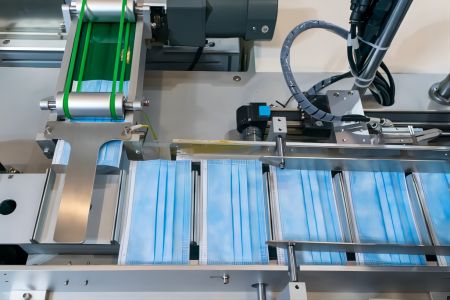2023/6/16

Underpads vs. Puppy Pads
The market for absorbent pads is diverse, with two common types frequently used for very different applications: underpads and puppy pads. While they may appear similar at first glance, understanding their distinct features and intended uses is crucial for consumers and businesses alike. This article breaks down the key differences between underpads and puppy pads, helping you make informed decisions.
Underpads: Primarily for Human Healthcare
Underpads, also known as bed pads or incontinence pads, are designed for managing incontinence and protecting surfaces from bodily fluids. Key characteristics include:
Target User: Primarily adults with incontinence, bedridden patients, or those recovering from surgery.
Absorbency: High absorbency levels to contain large volumes of liquid.
Materials: Typically constructed with multiple layers: a soft, absorbent top layer (often made of non-woven fabric), an absorbent core (containing fluff pulp and/or super absorbent polymers), and a waterproof backing (usually polyethylene).
Sizes: Available in a range of sizes to fit different beds and furniture.
Features: Some underpads include features like quilted patterns for increased fluid distribution, odor control, and adhesive strips to keep them in place.
Medical Grade: Many underpads are manufactured to medical-grade standards, ensuring hygiene and safety.
Puppy Pads: Designed for Pet Training and Containment
Puppy pads, also known as training pads or potty pads, are specifically designed for housebreaking puppies and managing pet incontinence. Key characteristics include:
Target User: Puppies, senior dogs, or pets with incontinence issues.
Absorbency: Moderate absorbency, designed to contain smaller volumes of urine.
Materials: Similar construction to underpads, with a top layer, absorbent core, and waterproof backing. Some puppy pads include an attractant scent to encourage use.
Sizes: Typically smaller than underpads, sized appropriately for puppies and small dogs.
Features: Many puppy pads include built-in attractants to entice pets to use them, as well as odor-control technology. Some also have adhesive strips to keep them in place.
Durability: Designed to withstand scratching and tearing from pets.
Key Differences Summarized:
| Feature | Underpads | Puppy Pads |
|---|---|---|
| Target User | Humans (incontinence, medical) | Pets (training, incontinence) |
| Absorbency | High | Moderate |
| Size | Larger | Smaller |
| Special Features | Medical grade, odor control | Attractant scents, tear resistance |
Choosing the Right Pad:
The choice between underpads and puppy pads depends entirely on the intended use.
For Human Use: Underpads are the clear choice for managing human incontinence or protecting surfaces in a healthcare setting. Their higher absorbency and medical-grade construction make them ideal for these applications.
For Pet Use: Puppy pads are specifically designed for pet training and containment. The attractant scents and tear-resistant construction make them a better choice for pets than underpads.
Market Trends and Innovations:
Both the underpad and puppy pad markets are experiencing growth, driven by an aging population and increasing pet ownership. Innovations in materials and construction are leading to more absorbent, odor-controlling, and environmentally friendly products.
Conclusion:
While both underpads and puppy pads serve the purpose of absorbing liquids and protecting surfaces, they are designed for very different users and applications. Understanding their distinct features and intended uses is essential for making informed purchasing decisions.




 WhatsApp
WhatsApp
Send us your message
You can send an email asking for the price and detailed information of this product. We will reply you as soon as we receive your email